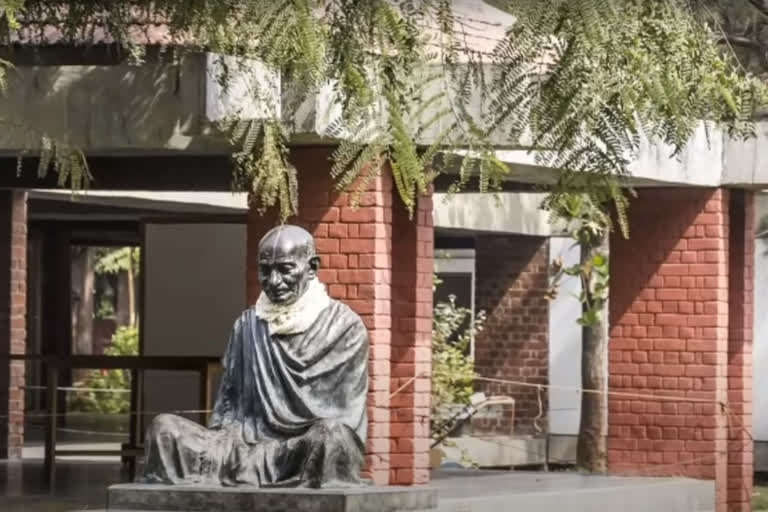Ahmedabad (Gujarat): Mahatma Gandhiji and River Sabarmati has a unique relationship. After arriving from South Africa, Gandhiji decided to build an Ashram in Ahmedabad. He established Sabarmati Ashram in 1917. However, before Sabarmati Ashram, he stayed in Kochrab Ashram for two years.
"Premchandbhai had given 1 acre of land for Rs 2,556 for an ashram on the river bank. First, he started building an ashram and as soon as he got possession, he shifted from Kochrab Ashram to Sabarmati Ashram," says Historian Dr Manekbhai Patel.
An Ashram that can develop along with its own society was Gandhiji's idea. The serene banks of the river Sabarmati fulfilled Bapu's idea perfectly. He liked the place of Sabarmati Ashram very much.
"Gandhiji also said at that time that this place is perfect for an ashram. Because it has a cemetery on one side and a prison on the other. Any Satyagrahi who comes to this ashram will have only two choices. Be ready to go to jail by doing satyagraha, otherwise, be ready to sacrifice through satyagraha." says Atul Pandya, Director, Gandhi Ashram.
Simplicity is a synonym of Bapu's life and the Ashram reflected it. At the same time, the concept of collective works was given special attention at the ashram. The most important part of Gandhi Ashram, which is called Hridayakunj, is the abode of Gandhiji and there's even a special case behind its naming.
Read: Kerala Varma Pazhassiraja: the people's King who led a valiant war against British
Atul Pandya, Director of Gandhi Ashram says that "Kakasaheb Kalelkar gave this name 'Hridaya Kunj'. His motive behind naming Gandhiji's official residence in the ashram was that Gandhiji was the heart of the ashram. So the name of the place where he lived must be called 'Hridaya Kunj'. Gandhiji did not have a separate bedroom in Hridayakunj. He did spinning of charkha (Spinning wheel) in the corridor in the Hridayakunj and slept nearby."
Prayer is what the Mahatma insisted on to all and he did it as first thing in the morning all through his life. Prayer had a unique significance in Gandhiji's life and the daily routine of the ashram started from there at 4:30 in the morning and ended in prayer in the evening. The Ashram also discussed proceedings during the day and the plan for the next day. The discussion took place after the evening meeting. There is a place for prayer meetings near Hridayakunj.
Gandhiji was an international figure at that time. Many came to meet him from the country and abroad in Sabarmati Ashram. However, the rules of the ashram have remained the same for everyone. "Mirabai, who lived in England, was so inspired by Gandhiji that she decided to come to India from England and stay in an ashram with Gandhiji. She also changed her attire completely and also learnt to spin the wheel to make Khadi", says historian Manekbhai Patel.
This ashram was not just a place of refuge for Gandhiji or other satyagrahis. The ashram held an important place in the freedom struggle. This is the beginning of many movements of national awareness and social change. Sabarmati Ashram has 165 buildings at present. After Gandhiji's death, 'My life is my message' gallery was established in the ashram.
This gallery depicts Bapu's lifestyle from his childhood to his final journey. The main purpose of establishing this ashram was to make the people 'Atma Nirbhar' (self-reliant) as well as to adopt indigenous things. After Gandhi's death, his memorial museum was also built in the ashram premises. The Museum hosts his spinning wheel along with Gandhiji's spectacles, his walking stick and the copper vessel he used for drinking water.
Read: Watch! Unique park in Karnataka showcases Issuru uprising


